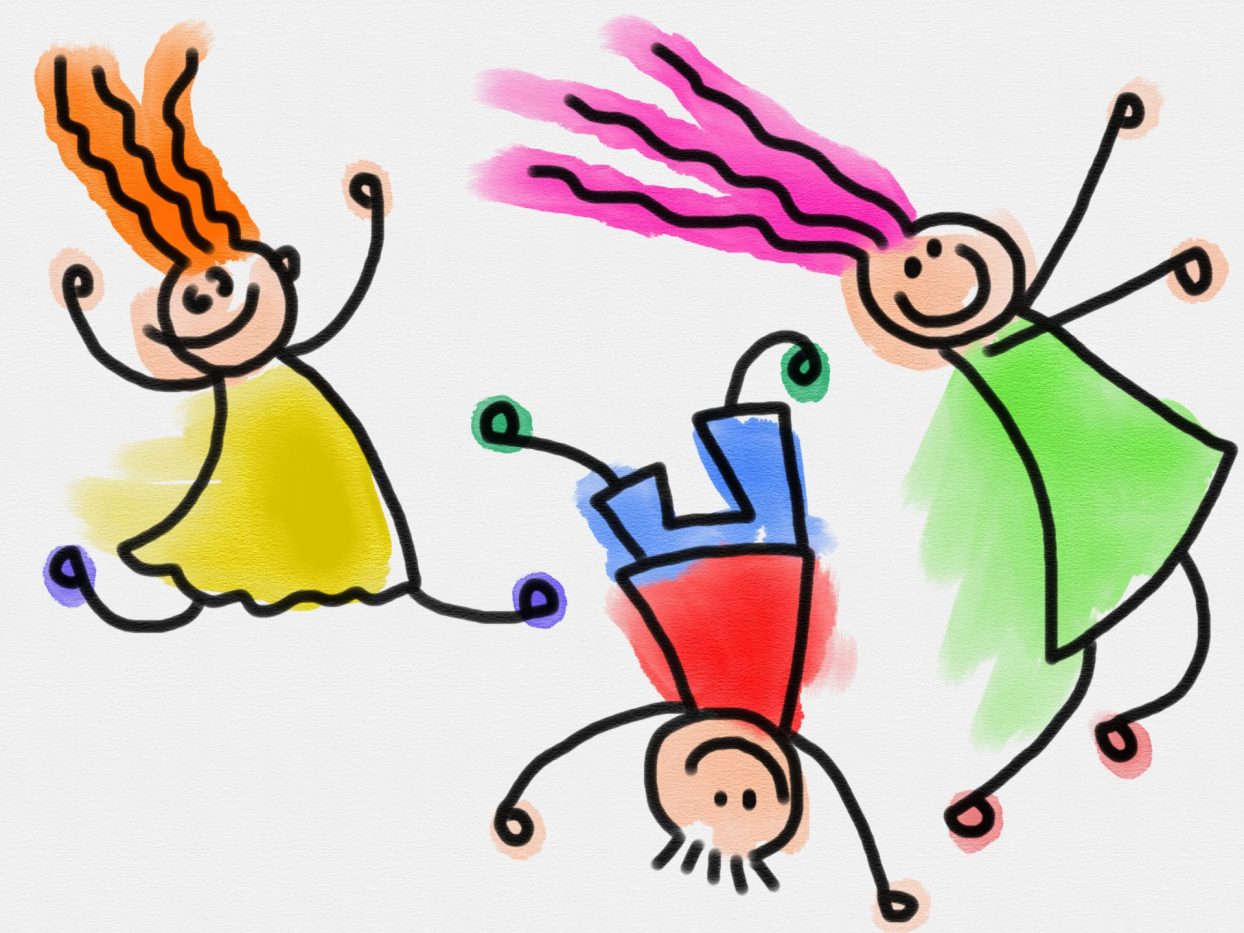26 de octubre de 2019
How to Keep Children Motivated in an Overwhelming World
Astrid Natalia Torres R. & Angie Paola Vargas D.
Over the last two years, education has tackled a revolution in the concept of teaching through ICT. According to the UNESCO, ‘‘Universal access to a quality education as an essential human right has faced a paradigmatic change’’ (p. 8). As well as all fields of humans’ development, education demands constant innovation in terms of procedures and contents to fit new population. However, the overuse of ICTs and the excessive information provided through online resources has allowed children to have access easily, without knowing how to manage it. By the same token, UNESCO affirmed that ICT’s ‘‘grew widely in the last years of the 20th century and in the 21st century, shaping what has been called the “Society of Knowledge” or the “Society of information’’ (p. 12). In this regard, we can realize that children’s immersion in this particular society favors having information in open access, which is not always appropriate for them.
On the other hand, two years ago, education started a new challenge not only for children and parents but also for teachers, since ICT’s have become an essential part of the curriculum, as a means for teaching different subject matters. Therefore, the role of students and teachers have also changed. Nowadays, children must have the option to lead their own academic and behavioral processes. Since the use of virtual environments and the implementation of blended learning in the classes have a positive effect in their early years, as stated by Rojas (2019) “it (virtual learning environment) helps students learning in other environments different from the classroom, using new resources that motivate and reinforce learning by acquiring and improving technological skills” (translated from Spanish, own translation, p. 42). Likewise, throughout our experience, we have noticed how learners have lost their curiosity and creativity; it is evident that day by day, it has become harder to achieve learners’ astonishment and motivation.
Furthermore, not only a virtual environment is a requirement; the classroom atmosphere must captivate learners to get connected to it. Besides this, “when students walk into your room, they should feel that they have entered: a classroom, a place of and for learning; an English classroom specifically; your classroom in particular” (Cooze, 2006, p. 2). A comfortable class setting yields better learning due to the connection between work and students’ emotions; even when their performance is not as successful as they expected it to be. In the same way, Zull (as cited in Putcha, 2013) asserted that “emotions play a key role in learning … the brain changes physically when we learn, and states that the ‘change is most extensive and powerful when emotion is part of the learning’’ (p. 1). With no doubt, emotions are strongly connected to learning. Motivated learners, in contrast to disappointed ones may reach opposite outcomes. and in their childhood we have to take them (emotions) into account at widespread level. Then, as our emotions are connected to our learning, the brain also has the capacity to make pupils learn better or not. Along similar lines, Zull (as cited in Putcha, 2013) ‘‘the brain needs to be ‘in control’… ‘No outside influence or force can cause a brain to learn. It will decide on its own. Thus, one important rule for helping people learn is to help the learner feel they’re in control’’ (p. 1). Then it is essential to make learners aware of their progress, having in mind their possibilities to have a good performance.
Regarding the good conditions required in a learning space and its surroundings to favor learning and motivation, students are determined by their effort or failures. From this view, Andres (as cited in Putcha, 2010) suggested a “can-do spirit” in our classrooms. We will achieve such a can-do classroom culture if we can manage to involve our students in practice” (p. 10). In the same breath,
…it’s a classroom culture that makes it possible for students to engage in exploring the language, have meaningful experiences and get enough opportunity to understand and create new language for themselves. This means students become aware they are making progress – which in itself carries the movement metaphor – and then the brain rewards itself with joy (Putcha, 2013, p. 1)
Accordingly, the importance of emotions, and their connection with the brain when children are learning, Stevick (1980) claims that “success depends less on materials, techniques and linguistic analyses, and more on what goes on inside and between the people in the classroom” (p. 4). Thus, emotions influence the way learners perceive and react when learning from mistakes and keep motivated as it makes them to impel towards their goals in the academic and behavioral areas.
On the basis of the previous arguments, we intended to enlist some ideas arisen along our experience with preschool children, used to keep their motivation:
- Do not praise, give positive feedback: This refers to the immediate result that students get when they earn a reward, as they work only to get it but not to learn how to do something. Instead of this, give positive feedback about their work; tell them what they are doing well, and what they still need to improve; encourage them to work for them and not for a reward.
- Rewards Vs. surprises: In relation to the previous idea, surprises can also be a good option to enlighten students’ work as it does not warn them to get a result if they do something, but to surprise them as a way to compliment. The purpose of this strategy is to keep them focused on the task rather than the reward.
- Choices: It is important to get students involved in the activities, just by including their names in some writing exercises or math problems. Besides, let them be part of the decisions of the class, like choosing the time to do an activity or what to do first (only if it is not relevant to the sequence of a process), taking into account the content from their own context.
- Moving activities: For preschoolers, movement is essential as they learn better when they are using their bodies. For instance, when learning the letters or commands, they will remember them easily as they have to listen and act out what they have So, it favours their listening skills as well.
- Level challenge: It is paramount to take into account the age of the students, when you propose a challenge to them. Do not try to assign too much as they could lose their interest due to the lack of time to finish it.
- Fast finishers: Our classroom are heterogeneous; we have different types of learners. In this regard, teachers must recognize children who always finish before the expected time. Then, they would be able to do some extra activities to keep them involved in their classes while the other kids keep working on the assigned tasks. In this sense, for teachers, it is easy to focus on the children who face some problems when working in class and need more assistance.
The aforementioned ideas would not be useful if the teacher is not passionate and has the desire of changing the teaching practices to increase and maintain students’ motivation. Taking into account that childhood is the first stage where students are starting to face their own life’s challenges, and the necessity of being eager to learn. In essence, it is compulsory for teachers to be updated and in continuous learning of the strategies and different approaches and resources to educate nowadays. Moreover, the basis of this motivation grounds at first ages and it must be upheld along their educational process, wherever they are.
___________________________
References
- Cooze, A. (2006). 100 ideas for teaching English. London, UK: Continuum International Publishing Group.
- Puchta, H. (2010). Beyond materials, techniques and linguistic analyses: The role of motivation,
- beliefs and identity. Puertas Abiertas (6). Retrieved from: http://www.memoria.fahce.unlp.edu.ar/art_revistas/pr.4918/pr.4918.pdf
- Putcha, H. (2013). Motivating Teens through Activating their Brain’s own Reward System. Webinar for Cambridge University Press. Retrieved on September 30th from: http://www.herbertpuchta.com/wp-content/files_mf/1382965922rewardhandout28oct.pdf
- Rojas, A. N. (2019). Diseño e implementación de un ambiente virtual de aprendizaje como herramienta didáctica para el desarrollo de la habilidad comunicativa en Inglés. Nautilus Scientiae (1), 30-43.
- Stevick, EW. (1980). Teaching Languages. A Way and Ways Rowley, MA: Newbury House.
- UNESCO. (2013). Strategic approaches of the use of ICTS in education in Latin America and the Caribbean. Regional bureau of education for Latin America and the Caribbean. Recuperado de: https://unesdoc.unesco.org/ark:/48223/pf0000223251_eng


